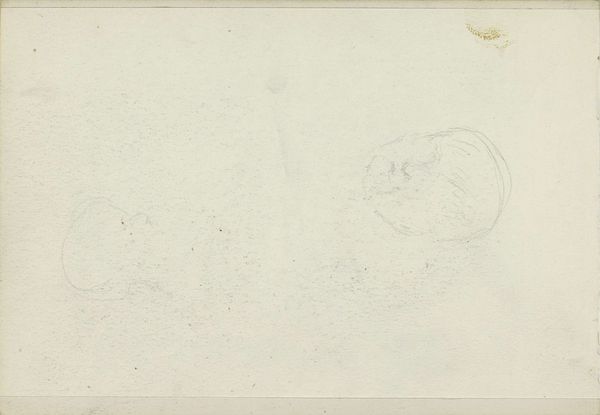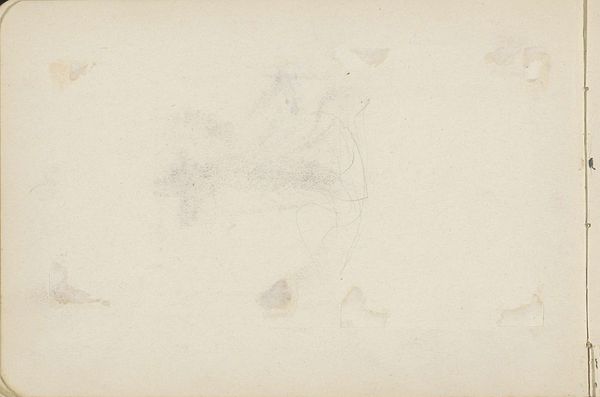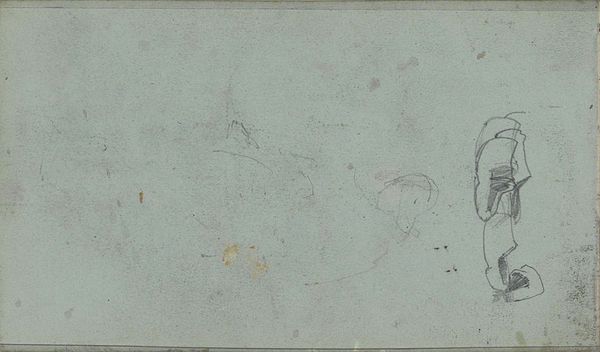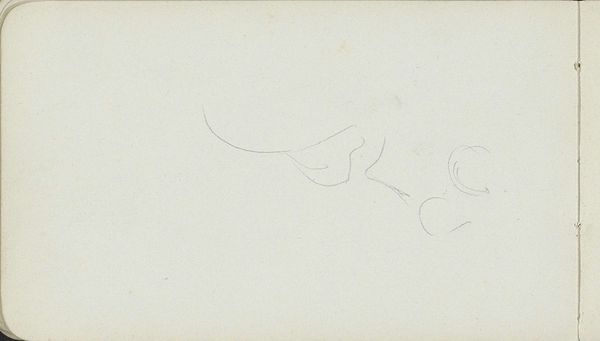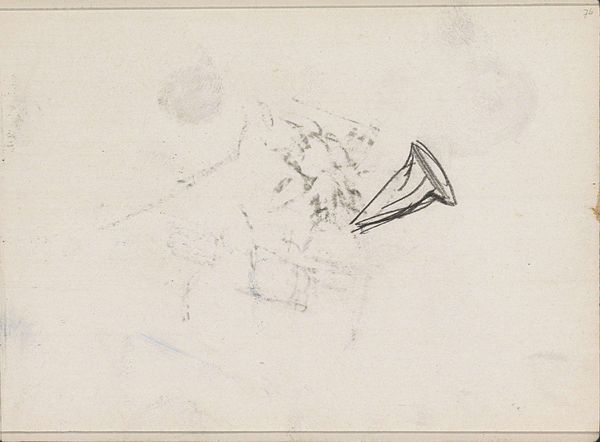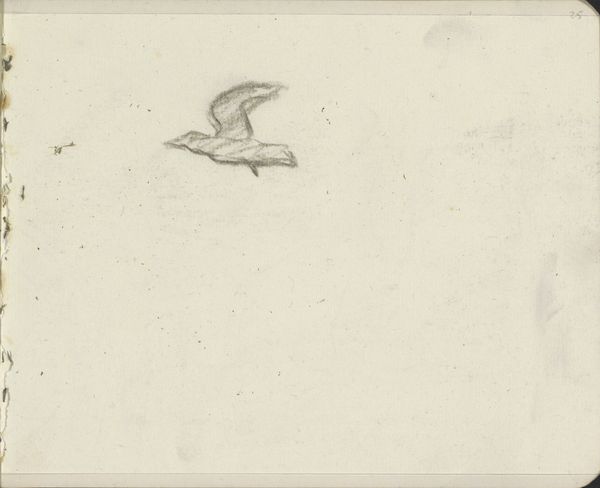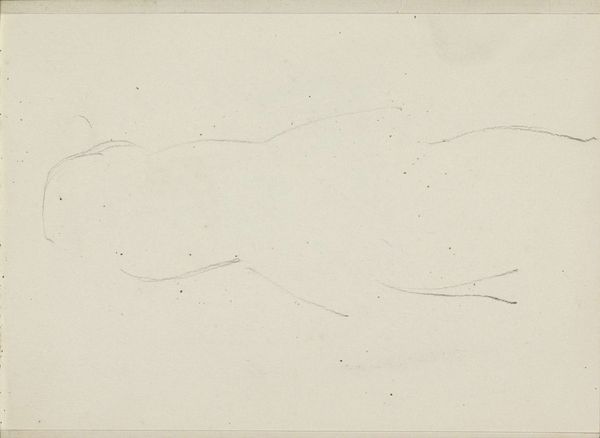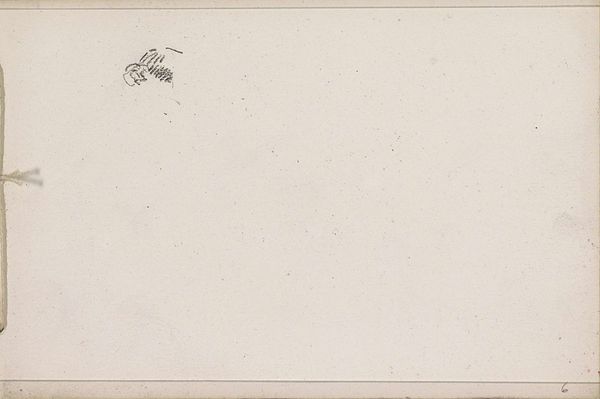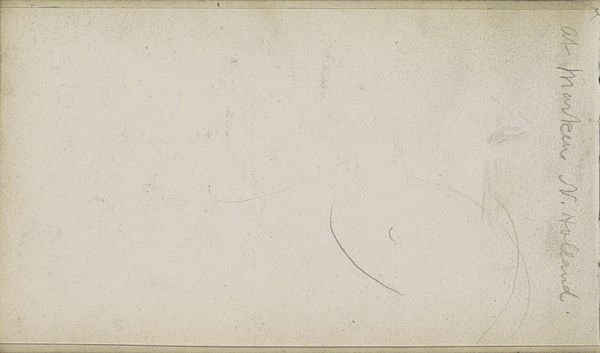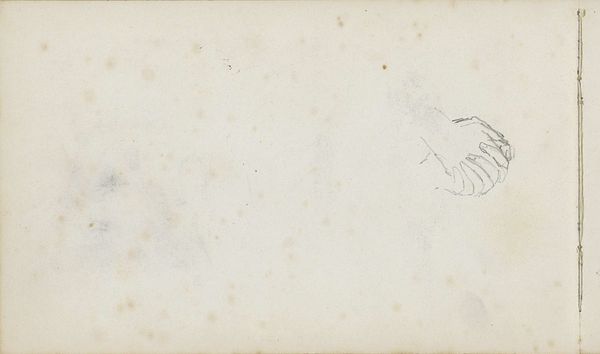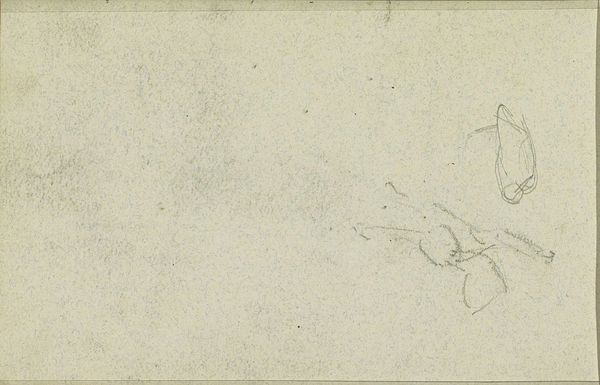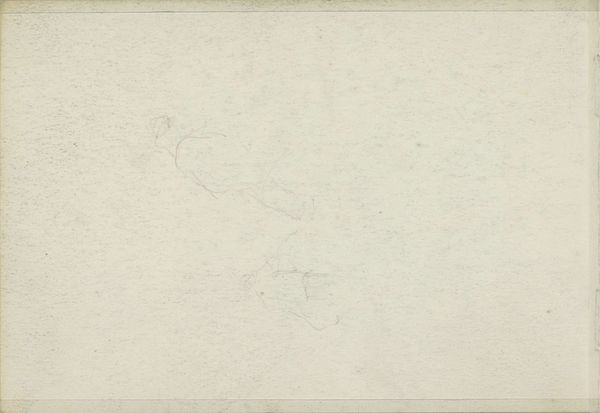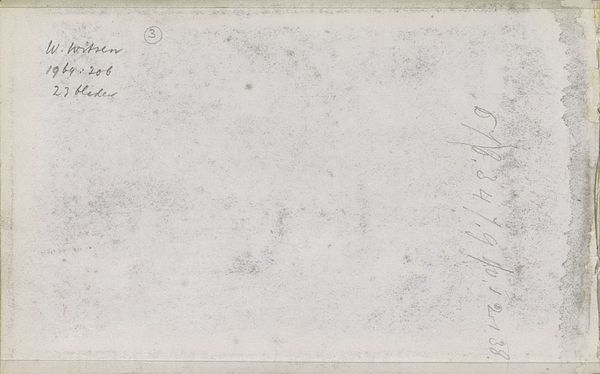
drawing, paper, pencil
#
drawing
#
art-nouveau
#
paper
#
sketch
#
pen-ink sketch
#
pencil
#
line
#
sketchbook drawing
Copyright: Rijks Museum: Open Domain
Curator: This delicate pencil drawing, aptly titled "Studie," comes to us from Carel Adolph Lion Cachet, likely dating between 1905 and 1906. Editor: It strikes me as profoundly simple—a faint gesture rendered in pencil, almost lost on the expanse of the page. The sparseness is quite effective; what am I looking at? Curator: A bicycle's handlebars and front wheel, it seems, captured with the flowing lines so characteristic of Art Nouveau. Now, what might a bicycle signify in the socio-political landscape of the early 20th century? Think about class, gender, access... Editor: Interesting. My first instinct was purely aesthetic. I see the composition; the slight pressure of the pencil creates darker and lighter areas within the sketched wheel, for example, while most of the lines appear thin and rapid. It gives it a sense of kinetic energy. I immediately start thinking about semiotics, the system of signs and what they are trying to say… Curator: Precisely! This was a period when the bicycle offered new-found freedom and independence to women, particularly in urban settings. It allowed them to challenge restrictive gender norms and access spaces previously deemed exclusively male. Also, who had access to this mode of transportation? That tells us more about class! Editor: Right. Considering its simplicity, it speaks to a larger societal shift, the material reality of changing urban landscapes, perhaps, and shifting class boundaries made newly visible through technological advancements. Curator: It offers a lens through which to examine notions of progress, technology, and equality, raising questions about who benefited from these advancements and who was left behind. We see similar questions explored across Cachet’s portfolio. Editor: It also makes me appreciate the drawing's artful construction: the contrast between the tight cluster of lines that form the wheel and the more spread-out, attenuated lines of the handlebars and frame. Curator: Seeing art this way is really valuable; considering all aspects together makes the pieces far more profound. Thanks for contributing these insights, the social and artistic really do overlap in potent ways! Editor: Likewise, I appreciate you bringing the piece down to earth a little, it has been an enjoyable discourse that allows us both to interpret the art with much richer nuance.
Comments
No comments
Be the first to comment and join the conversation on the ultimate creative platform.
